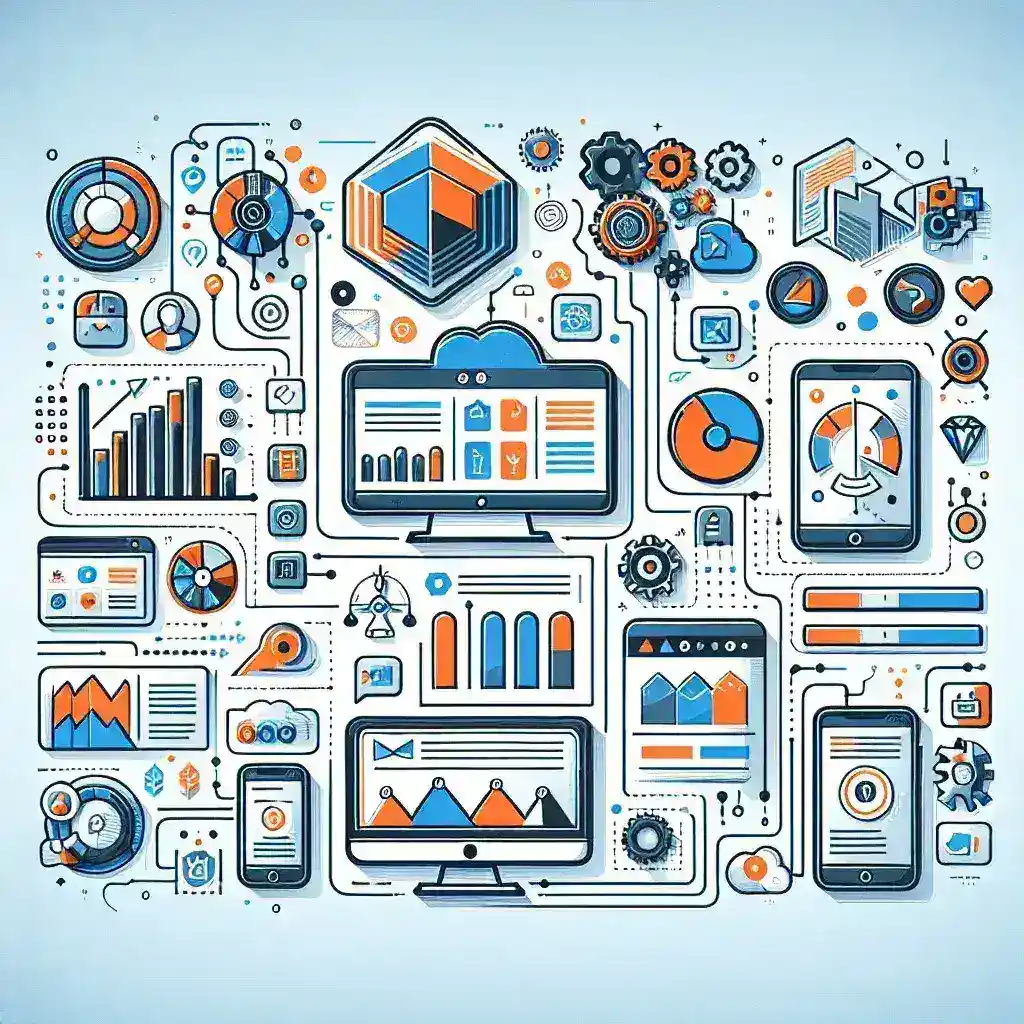Artificial Intelligence (AI) is increasingly becoming a transformative force in the health and wellness sectors. One area seeing significant advancements due to AI is personal nutrition. Traditionally, nutritional advice has been generalized—dietary guidelines applied uniformly to populations with little regard for individual differences. However, AI is now reshaping the approach to nutrition by delivering highly personalized, data-driven insights that help people optimize their diets according to their unique biological makeup and lifestyle. From personalized meal plans to real-time biomarker analysis, AI is revolutionizing how we approach food and health.
AI-Driven Personal Nutrition: The Shift from General to Personalized Diets
AI is changing the nutrition landscape by enabling personalized dietary recommendations that cater to individual needs rather than the general public. Traditional dietary guidelines, such as the food pyramid or recommended daily allowances (RDAs), provide average guidelines, but these recommendations often miss key individual factors such as metabolism, activity level, genetic predispositions, and health conditions.
AI enables nutrition plans to be tailored by:
- Using genetic data to understand how different people metabolize nutrients.
- Incorporating real-time health data from wearable devices.
- Analyzing food choices and behaviors to create tailored nutritional solutions.
Personalized nutrition empowered by AI uses a data-driven approach to provide individuals with actionable insights about their health and diet, leading to more sustainable health outcomes.
The Role of Data in AI-Powered Nutrition
At the heart of AI-driven personal nutrition is data—whether it’s collected from your genetics, daily lifestyle patterns, or wearable devices that track your biometric information. AI gathers, processes, and analyzes these datasets to generate personalized diet plans.
Types of Data Utilized in AI-Powered Nutrition
| Data Source | Type of Information Collected | Impact on Nutrition Plan | Example Use Case |
| Genetic Data | DNA, gene expression | Identifies nutrient metabolism, predispositions | Personalized vitamin intake |
| Wearable Devices | Activity levels, heart rate, sleep | Adjusts caloric intake based on physical activity | Daily calorie adjustments |
| Health Records | Medical history, chronic conditions | Tailors diet for disease management | Low-sodium diet for hypertension |
| Real-Time Biometrics | Blood glucose, hydration levels | Recommends immediate dietary changes | Post-workout recovery meals |
AI takes these different data sources and creates a complete picture of the individual’s nutritional needs. This level of detail allows AI to provide more precise and effective dietary advice than generic guidelines ever could.
AI and Nutrigenomics: The Intersection of Genetics and Nutrition
The integration of AI with nutrigenomics—the study of how genetic variations affect individual responses to diet—is a groundbreaking development in personalized nutrition. AI enhances nutrigenomics by analyzing complex genetic data to provide dietary recommendations tailored to each person’s unique genetic makeup. This approach allows for highly individualized nutrition plans that consider genetic predispositions, helping people make more informed dietary choices that align with their specific health needs.
How AI Utilizes Genetic Data for Personalized Diets
AI leverages genetic data to offer personalized dietary advice by examining how different genetic variations influence nutrient metabolism and health outcomes. For example, AI can identify genetic markers associated with obesity and suggest dietary adjustments like increased fiber intake to manage weight more effectively. Similarly, for individuals with a genetic predisposition to cardiovascular disease, AI might recommend a low-fat diet to reduce risk. By integrating these genetic insights, AI provides customized nutrition recommendations that can improve overall health and prevent disease, adapting dietary advice based on each person’s unique genetic profile.
AI-Enabled Nutrition Platforms and Apps
The advent of AI-powered nutrition platforms and apps is making personalized dietary guidance more accessible than ever. These applications use sophisticated algorithms to analyze users’ eating habits and genetic data, offering tailored meal recommendations that align with individual health goals. Many of these platforms also integrate with wearable technology to monitor real-time health metrics, providing users with immediate feedback on their diet and lifestyle choices. This combination of AI, genetic analysis, and real-time data helps users make informed decisions about their nutrition, promoting healthier eating habits and improved overall well-being.
Features of AI-Driven Nutrition Apps
| Feature | Description | Example Platforms |
| Food Recognition | Identifies food items through photos | Calorie Mama, Bite AI |
| Nutrient Tracking | Tracks macronutrient and micronutrient intake | MyFitnessPal, Cronometer |
| Meal Plan Personalization | Provides tailored meal suggestions | Noom, Lifesum |
| Integration with Wearables | Adjusts plans based on real-time activity | Fitbit, Apple Health |
These platforms offer users an engaging and intuitive way to monitor their diets and make adjustments according to their individual needs.
Real-Time Nutrition Recommendations with Wearables
AI-driven nutrition doesn’t just rely on static data; it can adapt to real-time changes in your body and lifestyle. Wearable devices like smartwatches and fitness trackers now play a critical role in this by providing continuous biometric data that AI can analyze to offer up-to-the-minute dietary advice.
How AI Uses Real-Time Data for Dynamic Diet Adjustments
- Post-Workout Recovery: After a workout, AI can recommend increasing protein intake to aid muscle recovery.
- Stress and Nutrition: If your wearable shows elevated heart rate or signs of stress, AI might suggest foods rich in magnesium, such as dark leafy greens, to help manage stress levels.
- Hydration Levels: Based on hydration tracking, AI can advise increasing water or electrolyte intake after intense exercise or in hot weather conditions.
These real-time adjustments help individuals optimize their nutritional intake on the go, ensuring that they meet their body’s specific needs at any given moment.
AI’s Impact on Chronic Disease Management
One of the most significant benefits of AI in personal nutrition is its role in managing chronic diseases like diabetes, hypertension, and heart disease. Nutrition plays a critical role in managing these conditions, and AI’s ability to process medical and dietary data simultaneously offers a more tailored approach to disease management.
AI and Dietary Management of Chronic Conditions
- Diabetes: AI can help diabetics manage their blood glucose levels by analyzing food intake and recommending low-glycemic foods in real-time. It can also send alerts if a meal might cause dangerous spikes in blood sugar levels.
- Hypertension: For those with high blood pressure, AI can analyze sodium intake and recommend lower-sodium alternatives, helping users keep their blood pressure in check.
- Heart Disease: AI can assist heart disease patients by suggesting heart-healthy foods rich in omega-3 fatty acids, fiber, and antioxidants.
With the integration of AI, people managing chronic diseases can receive more personalized and effective dietary recommendations, improving their overall quality of life.
The Rise of AI in Food Sensitivity and Allergy Management
AI is also making strides in addressing food sensitivities and allergies. Many people struggle with identifying foods that trigger adverse reactions, and traditional elimination diets can be challenging to maintain. AI simplifies this process by analyzing data from food diaries, wearable devices, and even genetic markers to identify patterns and suggest alternative foods.
How AI Assists in Managing Food Sensitivities
- Allergen Detection: AI-powered platforms can identify common allergens in foods and provide safe alternatives.
- Symptom Tracking: AI can correlate symptoms (such as bloating, fatigue, or headaches) with specific foods and help users avoid those triggers.
- Diet Adjustment: For those with intolerances, AI can recommend nutrient-rich alternatives, ensuring that users maintain a balanced diet even when eliminating certain food groups.
| Sensitivity/Allergy | AI Recommendation | Suggested Alternative |
| Gluten Sensitivity | Recommend gluten-free grains | Swap wheat with quinoa or rice |
| Dairy Allergy | Suggest lactose-free or plant-based products | Replace cow’s milk with almond milk |
| Nut Allergy | Recommend seed-based alternatives | Use sunflower butter instead of peanut butter |
By using AI to identify and manage food sensitivities, individuals can enjoy a healthier diet while minimizing adverse reactions.
AI and Sustainable Eating: A New Frontier
As sustainability increasingly influences dietary choices, AI is playing a crucial role in guiding individuals towards more environmentally conscious eating habits. By analyzing a range of factors such as food production processes, carbon footprints, and nutritional values, AI offers personalized recommendations that promote both personal health and environmental sustainability. This integration of AI with sustainable eating practices helps consumers make informed decisions that align with their health goals and ecological values.
AI’s Role in Promoting Sustainable Nutrition
- Carbon Footprint Analysis: AI can assess the environmental impact of different foods by analyzing their carbon footprints. It evaluates factors such as production methods, transportation, and resource use to determine the overall environmental impact of food items. Based on this analysis, AI suggests lower-impact alternatives, helping individuals make more sustainable food choices that reduce their carbon footprint and support environmental conservation.
- Sustainable Meal Planning: AI-driven platforms optimize meal planning by focusing on ingredient efficiency and waste reduction. By analyzing users’ dietary preferences and food consumption patterns, these platforms can recommend recipes and meal plans that maximize the use of ingredients and minimize food waste. This approach not only supports sustainable eating but also helps users manage their grocery budgets more effectively.
- Plant-Based Recommendations: AI excels at recommending plant-based alternatives to meat and dairy products. By analyzing nutritional content and individual dietary needs, AI suggests plant-based options that provide similar health benefits while reducing environmental impact. These recommendations help users transition to a more sustainable diet without compromising on nutrition, supporting a shift towards more eco-friendly eating habits.




